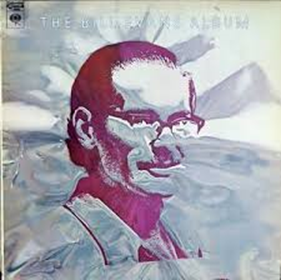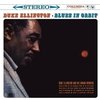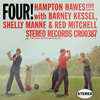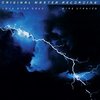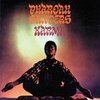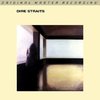AAA 100% Analogue This LP was Remastered using Pure Analogue Components Only from the Master Tapes through to the Cutting Head
Speakers Corner / Columbia - C 30855 - 180 Gram Virgin Vinyl
AAA 100% Analogue - Mastered by Rainer Mallard at Emil Berliner
Pressed at Pallas - Limited Edition
Speakers Corner 30 Years Pure Analogue This LP is an Entirely Analogue Production
The Bill Evans Album was a milestone for piano jazz. Speakers Corner Records superb re-mastering will engage jazz fans. Both the acoustic piano and Fender Rhodes represent sharp and mellow tonality with equal balance and mixing. When the trio is playing simultaneously, they sound like a single unit. Certainly the psychedelic album cover art will raise a nostalgic smile.- 5/5 Sound AudiophileAudition
a fascinating project, with a top class master that allows all of these frequency changes to have room to inform and intrigue.- Theaudiophileman
This album was a triumph on its release — it actually won two Grammies and it’s a pleasure to have it back in the catalogue as an audiophile LP. At a time when we’re experiencing an avalanche of vinyl reissues, many of them mediocre in their sound quality, Speakers Corner remain reliably excellent. A first rate Bill Evans album has been given the treatment it deserves londonjazz
The global corporation Columbia recorded and released only two LPs with pianist Bill Evans. A meagre result when one considers the numerous concerts that the new trio undertook between 1969 and 1974. Together with Eddie Gomez, a phenomenon on the bass, and drummer Marty Mortell, the three established a firm – and ever better – trio. Evans became interested in the possibilities offered by the Fender Rhodes piano and used it for the first time in "The Bill Evans Album".
The LP is remarkable in that only Evans’s own compositions were recorded – three previously recorded pieces and four brand-new works. Of particular note is the melancholy "Two Lonely People", Evans’s musical interpretation of a poem by Carol Hall. "Sugar Plum" and "T.T.T." were to remain in his repertoire right up until his very last recordings. Unusual but very commendable because it begins with an ad hoc introductory improvisation is the electric piano version of Evans’s most well-known composition – "Waltz For Debby".
The excellent technical facilities at the Columbia Studio were used to the full by Bill Evans, even though they were only recording a small ensemble. And that is why the seven numbers sound far better than most of the trio’s live recordings. And as Bill Evans once said, it was with this trio that he could fulfil his musical ambitions.
"The new Bill Evans Album keeps changing." So read the half page ad on page 35 of the November 25, 1971 issue of the (mostly) rock music magazine ROLLING STONE, and they were right about this collection of Evans' originals, for which he won TWO Grammy awards that year. It's like a whole bunch of new albums in one album, the ad continued. The sessions do have that special imprint of Bill's compositional genius, and in its own way, the effect of the whole sounds like its "always changing" -- due, I suppose, to the ever-whirling colorful content of Bill's tunes. In the spirit of the times, Columbia Records had signed Bill in 1971 as part of its attempt to "reach out" and expand its jazz roster (perhaps on the strength of MILES' then newfound popularity among younger listeners; other more straight ahead jazz artists such as Dexter Gordon would soon follow on the label). Evans did two albums for the label, one an uncomfortable avant-garde orchestral collaboration with old friend George Russell ("Living Time") and this classic of all-Evans compositions with the Gomez/Morell trio. It's about time they released it --albeit twenty five years later.
Firstly, this reviewer must admit a particular bias to this recording: After hearing some of the 1961 Vanguard sessions at a friend's in 1970, (and as a pianist myself, being blown away and knowing I'd never be the same) the first Evans recording I could find anywhere was the "Live in Montreal" album --and this album was the second. I have worn out three vinyl copies , and know just about every Evans solo on it by heart. (I mentioned this only as a compliment to Bill when we met later here in New Jersey in 1978: modest man that he was, he was a tad embarrassed, surprised "that anyone would do such a thing", as I recall him saying.) Some have said that this period of the pianist's catalog marked a turn from the sometimes pedestrian (for Bill) but nevertheless fascinating mid-late 60s period. Eddie Gomez's interplay with the master is in bloom, though not as totally assured as it would very soon become. Still, there are quite a few impressive moments.
Marty Morell on drums sounds fine, though perhaps somewhat restrained at times, though always with clean articulation, and supportive of Evans' sparkling phrases and rich harmonies ."Funkallero" leads off, Bill's C-minor blues blowing vehicle with its third phrase borrowed from the bop standard "Dahhoud." He opens it up on the Fender Rhodes electric piano, the instrument he helped pioneer well before its common acceptability among jazz pianists in the mid-seventies. which is conceptually similar in arrangement, but as competent as it is, it just lacks some of the fire that characterizes the originally released take. The bass often stays "in 2", and Gomez does not appear to "push" Bill as much as in the first one. It's also 1:35 shorter than the "accepted" track.
The stunning waltz "The Two Lonely People" made its first appearance on this album, and it's fascinating to scrutinize the way he originally conceived it here in all its pristine delicacy, as composed to the later readings (especially in "live" versions with Johnson and LaBarbara), where he often rushed the theme, emphasizing transition chords, but making the melodic framework difficult to observe, notably on the final Village Vanguard sessions of June 1980. For students of Bill's compositional techniques, this tune is a theory lesson in itself. The same could be said for "Sugar Plum" albeit for different reasons. As explained in the original liner notes, the tune was originated when a lyricist called Bill to let him know he'd written a lyric based on a four-bar improvised phrase he heard on one of Evans' records (it's from one of the tunes on the Jim Hall collaboration, Intermodulation) "Sugar Plum" is a short, repeated structure taking the player through all twelve keys. Starting in G, it's Gma7-Fmaj7 twice then a ii-V-I progression to C major, continuing on through the cycle of fifths.
I have often given it to piano students as a perfect and uncomplicated exercise in navigating the transitional possibilities of key changes. My favorite part is when Evans reenters with the electric piano after the solo, giving it an unmistakable breath of fresh air, and with a harder swing, giving it almost a whole new meaning. The way he phrases the changes here there's a certain "rightness" to it that proves once again Bill's immense powers of concentration.
Bill's signature tune"Waltz For Debby" follows, opening warmly and contemplatively in an A MAJOR (!) rubato, with much inner voice movement, till the tune's cadence, where he modulates down to G and then to the original key of F, playfully opening up the melodic contours on Rhodes with the right hand, while the left comps on acoustic. Gomez then solos, with the pianist unable to resist a few whimsical comments of his own toward the end, which lead into a nicely muscular locked hands piano solo while Morell swings hard, changing to sticks. The alternate take released here is basically the same approach, although Bill's intro is more tentative than the master take, and, intriguingly, Gomez sounds more playful throughout. According to Orrin Keepnews' excellent reissue notes, this was the last tune recorded for the sessions. The accepted album version is certainly more authoritative than the alternate by contrast.
"Re: Person I Knew", Bill's intriguing composition named as an anagram for Keepnews, has its alternate take issued here for the first time too, and it's every bit as "good" as the released take. That version had Evans begin the tune on electric piano, which added yet another air of mystery to the haunting C-pedal theme. An interesting project for Evans aficionados would be to put all the "Re: Person.." tracks he ever did all on one tape. Comparisons to both the earlier performances and the later versions with Johnson and LaBarbara would be instructional, if not stunning.
It's quite difficult to put all my feelings about "Comrade Conrad" into words, but I should say here that this would have to go into my personal list of all-time favorite Bill Evans tracks. The tune seamlessly moves between 3/4 and 4/4 and, according to Bill, in the 1971 notes, "We tried playing it a couple of times on the gig and it never really worked out, but I felt it could." It's hard to believe, considering the ease and versatility that the trio displays here -- moving through its complex time and various changes of key. It's a unique tour-de-force and, indeed, he only returned to it once more in the last official release before his untimely death, the quintet date "We Will Meet Again." Bill's playing is distilled and controlled, yet flexible enough (like the left hand punctuations in the second solo chorus), His lines just sing, and Gomez's playing is especially attentive on this track to the interplay possibilities, showing a concentrated empathy with the pianist's ideas throughout.
He contributes a particularly strong solo here too. However, I've always wondered whether or not either Eddie or Bill gets momentarily lost -- around the 19th bar of the bass solo (the third bar of the change to 4/4 time): Bill hits a change or two that don't quite sound right, and Eddie's on his own until anchoring once again a few measures later. No harm done; the ensemble is in full swing when Evans returns with a Rhodes chorus while Gomez makes effective use of double stops.The piece closes with Bill alone at the Steinway -- and it's also one of my favorite of his patented endings -- that last chord sounds like it could go on forever.
An editorial opinion here about Keepnews' liner notes: he has always spoken eloquently, sensitively and knowingly about Evans' work --after all, he produced Bill's first Riverside albums and the two remained fast friends -- but since Bill's death in 1980, he seems to bring up the well-known drug problems all too often. Although the time frame of this album was apparently unaffected by them, one wonders why Keepnews often makes a point referring to it. He seems to dredge it up whenever he annotates a posthumous Evans release. , his sensitive comments on the late Helen Keane (and especially on the discrepancies in the original liner notes) -- are compact, intelligent and revealing. He has championed,Bill's genius quite articulately at every opportunity and should, in the final analysis, be forgiven for this seeming lapse in judgment.
"The Bill Evans Album" is one of the pianist's greatest, with Bill clearly in coherent and melodic form, playing his own compositions. Repeated listenings are richly and unexpectedly rewarding, and the album remains as glorious today as it was in 1971. And with three bonus alternate tracks to boot! All in all, if one were allowed, let's say, only five Evans albums (a most unpleasant choice) I would think this would have to be one of them. Bill's singular vision, flawless line construction, lavish chordal tapestries , trio interplay, and the timeless beauty of his compositions are just a few of the reasons why.
If you've come this far you're obviously more than a casual listener. This is one LPyou just can't afford to be without.
Recording: May and June 1971 at CBS 30th Street Studio, New York, by Pete Weiss
Production: Helen Keane
Musicians:
Bill Evans, piano, electric piano
Eddie Gomez, bass
Marty Morrell, drums
Selections:
Side A:
1. Funkallero
2. The Two Lonely People
3. Sugar Plum
4. Waltz For Debby
Side B:
1. T.T.T. (Twelve Tone Tune)
2. Re; Person I Knew
3. Comrade Conrad
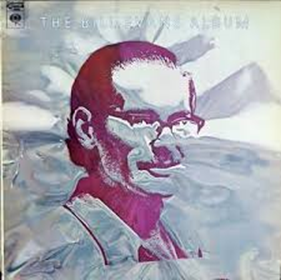

25 Years pure Analogue
Are your records completely analogue?
Yes! This we guarantee!
As a matter of principle, only analogue masters are used, and the necessary cutting delay is also analogue. All our cutting engineers use only Neumann cutting consoles, and these too are analogue. The only exception is where a recording has been made – either partly or entirely – using digital technology, but we do not have such items in our catalogue at the present time
Are your records cut from the original masters?
In our re-releases it is our aim to faithfully reproduce the original intentions of the musicians and recording engineers which, however, could not be realised at the time due to technical limitations. Faithfulness to the original is our top priority, not the interpretation of the original: there is no such thing as a “Speakers Corner Sound”. Naturally, the best results are obtained when the original master is used. Therefore we always try to locate these and use them for cutting. Should this not be possible, – because the original tape is defective or has disappeared, for example – we do accept a first-generation copy. But this remains an absolute exception for us.
Who cuts the records?
In order to obtain the most faithful reproduction of the original, we have the lacquers cut on the spot, by engineers who, on the whole, have been dealing with such tapes for many years. Some are even cut by the very same engineer who cut the original lacquers of the first release. Over the years the following engineers have been and still are working for us: Tony Hawkins, Willem Makkee, Kevin Gray, Maarten de Boer, Scott Hull, and Ray Staff, to name but a few.
At the beginning of the ‘90s, in the early days of audiophile vinyl re-releases, the reissue policy was fairly straightforward. Companies such as DCC Compact Classics, Mobile Fidelity, Classic Records and others, including of course Speakers Corner, all maintained a mutual, unwritten code of ethics: we would manufacture records sourced only from analogue tapes.
Vinyl’s newfound popularity has led many other companies to jump on the bandwagon in the hope of securing a corner of the market. Very often they are not so ethical and use every imaginable source from which to master: CDs, LPs, digital files and even MP3s.
Even some who do use an analogue tape source employ a digital delay line, a misguided ’80s and ‘90s digital technology that replaces the analogue preview head originally used to “tell” the cutter head in advance what was about to happen musically, so it could adjust the groove “pitch” (the distance between the grooves) to make room for wide dynamic swings and large low frequency excursions. Over time analogue preview heads became more rare and thus expensive.
So while the low bit rate (less resolution than a 16 bit CD) digital delay line is less expensive and easier to use than an analogue “preview head”, its use, ironically, results in lacquers cut from the low bit rate digital signal instead of from the analogue source!
Speakers Corner wishes to make clear that it produces lacquers using only original master tapes and an entirely analogue cutting system. New metal stampers used to press records are produced from that lacquer. The only exceptions are when existing metal parts are superior to new ones that might be cut, which includes our release of “Elvis is Back”, which was cut by Stan Ricker or several titles from our Philips Classics series, where were cut in the 1990s using original master tapes by Willem Makkee at the Emil Berliner Studios. In those cases we used only the original “mother” to produce new stampers.
In addition, we admit to having one digital recording in our catalogue: Alan Parsons’ “Eye in the Sky”, which was recorded digitally but mixed to analogue tape that we used to cut lacquers.
In closing, we want to insure our loyal customers that, with but a few exceptions as noted, our releases are “AAA”— analogue tape, an all analogue cutting system, and newly cut lacquers.
PALLAS
Audiophile Vinyl - Made in Germany For over 60 years the family business in the third generation of the special personal service and quality "Made by Pallas" is known worldwide. Our custom PVC formulation produces consistently high pressing quality with the lowest surface noise in the industry. Our PVC complies with 2015 European environmental standards and does not contain toxic materials such as Lead, Cadmium or Toluene. Our vinyl is both audiophile and eco-grade!
